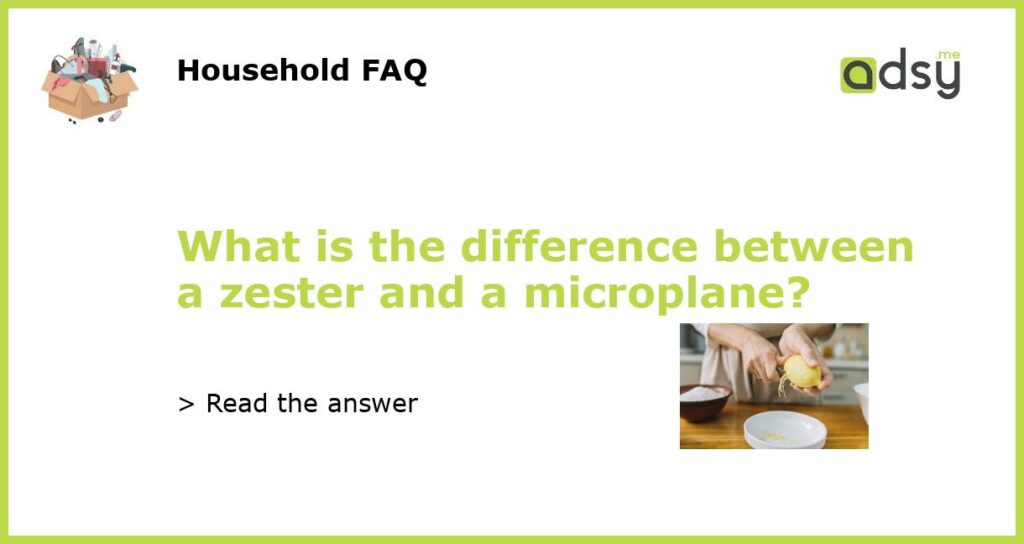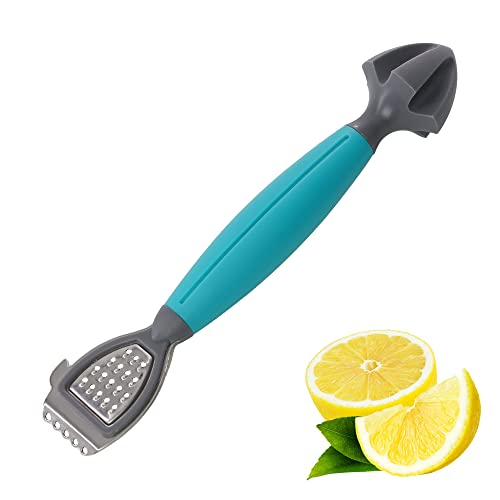What is a Zester?
A zester is a kitchen tool used for removing the zest, or the outer colorful part of citrus fruits such as lemons, limes, and oranges. It typically consists of a handle with a small, sharp, and narrow blade that is used to scrape off the zest. Zesters are commonly used in cooking and baking to add a burst of citrus flavor to dishes, such as desserts, cocktails, and savory recipes.
What is a Microplane?
A microplane is a type of grater that is often used as a zester. It is a long, flat tool with a series of small, sharp, and closely spaced teeth. It is primarily used for grating or shredding hard ingredients, such as cheese, ginger, garlic, and nutmeg. Microplanes are known for their sharpness and efficiency in producing fine, even results, making them popular among chefs and home cooks.
The Differences Between a Zester and a Microplane
While both a zester and a microplane are used for grating or zesting ingredients, there are some notable differences between the two. These include:
Zest Removal: Zester vs. Microplane
One main difference between a zester and a microplane is the way they remove zest. A zester typically removes large, thin strips or curls of zest from citrus fruits. This allows for more control over the size and shape of the zest, which can be appealing for certain recipes or garnishes. On the other hand, a microplane grates the zest into fine, almost powdery flakes. This produces a more uniform and delicate texture, which can be desirable for evenly distributing the flavor throughout a dish.
Uses Beyond Zesting
While zesters are primarily used for removing zest from citrus fruits, microplanes have a wider range of uses beyond zesting. Due to their sharpness and precision, microplanes can be used for grating a variety of other ingredients, such as hard cheeses, vegetables, spices, and even chocolate. They are often favored for tasks that require fine shredding or grating, as they can produce uniform results quickly and effortlessly.
Design and Functionality
Zesters and microplanes also differ in their design and functionality. Zesters typically have a single-purpose design, with a narrow blade that is specifically designed for zesting. They may have a handle or a grip for easy handling and control. Microplanes, on the other hand, are versatile multi-purpose tools. They often have a wider, flat body with a longer grating surface, allowing for larger quantities of ingredients to be grated at once. They may also have a handle or a grip for stability and ease of use.
Cleaning and Maintenance
When it comes to cleaning and maintenance, microplanes are often easier to care for than zesters. Due to their larger grating surface and more open construction, microplanes are less prone to clogging and are easier to clean. They can be rinsed under running water or brushed with a small brush to remove any trapped particles. Zesters, on the other hand, may require more meticulous cleaning, as the narrow blade can become clogged with zest and may need to be carefully scrubbed or soaked to remove any residue.






